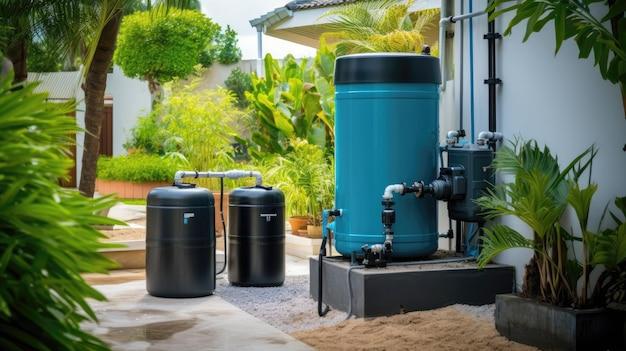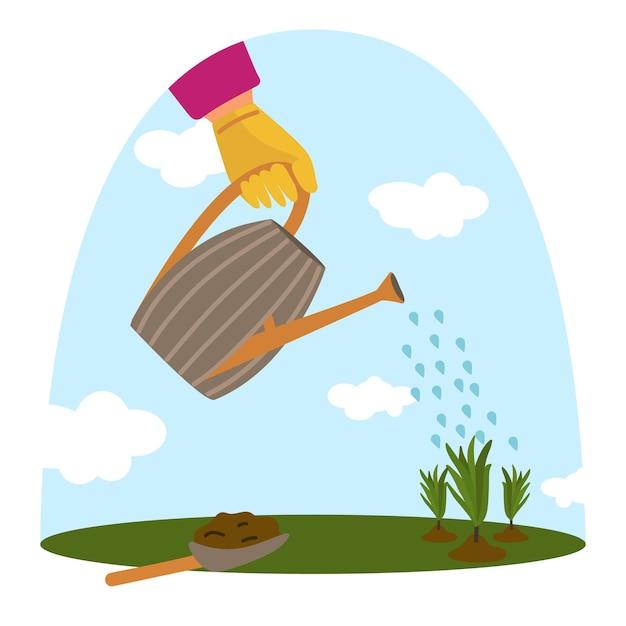Rainwater harvesting has become a popular practice in recent years, especially considering the growing concerns about water scarcity and environmental sustainability. But what exactly does rainwater harvesting entail and what are its main components? In this blog post, we will delve into the four key components of a rainwater harvesting system, giving you a comprehensive understanding of this eco-friendly and resourceful method.
From rooftop collection to storage and treatment, each component plays a vital role in ensuring the efficient utilization of rainwater. But before we explore these components, let’s take a moment to appreciate the significance of rainwater itself. Did you know that approximately 97.5% of Earth’s water is saline, followed by about 2.5% being freshwater? Out of this small fraction, a significant portion exists underground, waiting to be tapped into.
In this blog post, we will also touch upon the importance of underground water sources and address the question of whether it is safe to consume. Additionally, we will venture into the different methods of rainwater harvesting, particularly focusing on the practices adopted in India. So, if you’re curious about the water-saving potential of rainwater harvesting and the various ways it can be implemented, read on!

The Four Key Components of a Rainwater Harvesting System
Rainwater harvesting is a sustainable practice that allows you to collect rainwater and put it to good use. Whether you want to water your plants, wash your car, or supply your household with water, a rainwater harvesting system can be a great solution. In this section, we will explore the four main components that make up a rainwater harvesting system.
1. Catchment Area: Where It All Begins
The catchment area is the starting point of any rainwater harvesting system. It refers to the surface or area where rainwater is collected. This can be the roof of your house, a shed, or any other large surface that is designed to collect rainwater efficiently. The catchment area plays a crucial role in determining the quantity and quality of the harvested rainwater. Remember to keep your catchment area clean and clear of any debris to prevent contamination.
2. Gutters and Downspouts: Guiding the Flow
Once the rainwater hits the catchment area, it needs to be directed towards the storage system. This is where gutters and downspouts come into play. Gutters are narrow channels that collect the rainwater from the edges of the catchment area and guide it towards the downspouts. Downspouts, on the other hand, are vertical pipes that transport the rainwater down to the storage tank or container.
3. Storage System: Saving it for a Rainy Day
The storage system is where the rainwater is stored until it is needed. This can be an underground tank, an above-ground container, or even a rain barrel. The size of your storage system will depend on factors such as the amount of rainfall in your area and how you plan to use the harvested rainwater. It is important to choose a storage system that is durable, secure, and able to withstand the elements.
4. Filtration and Distribution: Clean and Ready to Use
Before using the harvested rainwater, it is essential to ensure that it is clean and free from any contaminants. Filtration systems, such as mesh screens or sediment filters, help remove debris, leaves, and other particles from the rainwater. Additionally, you may choose to incorporate disinfection methods such as UV treatment or chlorination to eliminate any potential pathogens. Once the rainwater is filtered and treated, it can be distributed to various areas of your property through a network of pipes or hoses.
By understanding these four main components of a rainwater harvesting system, you can effectively design and implement your own system. Remember, rainwater harvesting not only helps you conserve water but also reduces your reliance on municipal supplies. So why not tap into this natural resource and make the most of every rainfall? Save water, save money, and do your part in creating a more sustainable future. Happy harvesting in 2023!

FAQ: What are the Four Main Components of a Rainwater Harvesting System?
Rainwater harvesting is an environmentally friendly practice that involves the collection and storage of rainwater for various purposes. By using this system, you can conserve water, reduce your water bills, and even help combat water scarcity. In this FAQ-style subsection, we’ll explore the four main components of a rainwater harvesting system and answer some other common questions related to this topic. Let’s dive in!
What are the Four Main Components of a Rainwater Harvesting System
Rainwater harvesting systems typically consist of four main components:
1. Catchment Area
The catchment area is the surface where rainwater is collected. It can be the roof of your house, a garage, a shed, or any other suitable structure. The catchment area should be clean and free from pollutants to ensure the collected rainwater is of high quality.
2. Gutters and Downspouts
Gutters and downspouts work together to channel rainwater from the catchment area into the storage system. Gutters are installed along the edges of the roof, while downspouts are vertical pipes that carry the water down to the storage tanks or containers.
3. Storage System
The storage system is where the rainwater is collected and stored for future use. It can be an underground tank, a cistern, or even a series of barrels. The size of the storage system will depend on the amount of rainfall in your area and your usage requirements.
4. Filtration System
The filtration system ensures that the harvested rainwater is free from debris, leaves, and other unwanted particles. It typically consists of filters, screens, and sometimes even additional treatment methods like UV sterilization or chemical disinfection.
What are the Sources of Underground Water
Underground water comes from various sources, such as:
1. Rainfall
When it rains, a portion of the water infiltrates the soil and slowly percolates down to become underground water. This process replenishes the groundwater aquifers, which act as natural underground storage reservoirs.
2. Rivers and Lakes
Some rivers and lakes have underground connections, allowing water to seep through the soil and replenish the underground water sources.
3. Melting Snow and Ice
In colder regions, the melting snow and ice contribute to the underground water reserves.
How Much of Earth’s Water is Underground
Approximately 30% of the Earth’s freshwater is underground. This vast amount of water is stored within the porous spaces of rocks, soil, and aquifers. It plays a crucial role in sustaining ecosystems, providing drinking water, and supporting agriculture.
Is Underground Water Safe to Drink
Underground water is generally safe to drink, but its quality can vary depending on factors such as geological conditions and nearby human activities. It is always advisable to have the water tested for any contaminants before consuming it directly. Proper filtration and treatment methods can also ensure that the underground water is safe for drinking purposes.
What are the Different Methods of Rainwater Harvesting in India
India has a rich history of rainwater harvesting techniques. Some of the commonly used methods in India include:
1. Rooftop Rainwater Harvesting
This method involves capturing rainwater from rooftops and directing it to storage tanks for later use.
2. Check Dams
Check dams are small barriers constructed across streams and rivers to slow down the flow of water, allowing it to percolate into the ground and recharge the underground water sources.
3. Percolation Pits
Percolation pits are shallow pits dug in the ground and filled with coarse material like gravel. They allow rainwater to infiltrate the soil and recharge the groundwater aquifers.
4. Contour Bunds
Contour bunds are small embankments built along the contours of a slope. They help in slowing down the flow of water and prevent soil erosion. This allows water to percolate into the ground and recharge the underground water sources.
How Many Years of Water Do We Have Left
The availability of water varies greatly depending on the region and its water resources. While it’s challenging to provide an exact answer, according to the World Wildlife Fund (WWF), by 2025, two-thirds of the global population may face water shortages. It highlights the utmost importance of conserving and efficiently utilizing our water resources.
What are the Different Types of Water Harvesting
Apart from rainwater harvesting, there are several other types of water harvesting techniques, including:
1. Surface Water Harvesting
This method involves capturing and storing surface runoff in reservoirs, tanks, or ponds for later use.
2. Fog Harvesting
Fog harvesting is a unique method practiced in areas with high humidity but limited rainfall. It involves collecting water droplets from fog using specialized nets or meshes.
3. Stormwater Harvesting
Stormwater harvesting collects rainwater from urban areas, such as streets, parking lots, and sidewalks, and stores it for various purposes like irrigation and recharging groundwater.
What is Underground Water Also Known As
Underground water is commonly referred to as groundwater. It is stored below the Earth’s surface in natural formations called aquifers.
What are the Examples of Underground Water
Examples of underground water include the groundwater found in wells, boreholes, and springs. These sources tap into the underground aquifers to access freshwater.
Understanding the components and processes involved in rainwater harvesting systems can help you make informed decisions about conserving water and utilizing sustainable practices. By implementing these systems and exploring alternative water harvesting methods, we can reduce our dependence on conventional water sources and contribute to a greener future.
Now that you have a clearer picture of the main components of a rainwater harvesting system and some related questions, you can start exploring the possibilities of implementing such systems in your own homes or communities. Happy harvesting!
Note: The content provided in this article is for informational purposes only and should not be considered as professional advice. It is always recommended to consult with experts or relevant authorities for specific guidance related to rainwater harvesting and water management.
